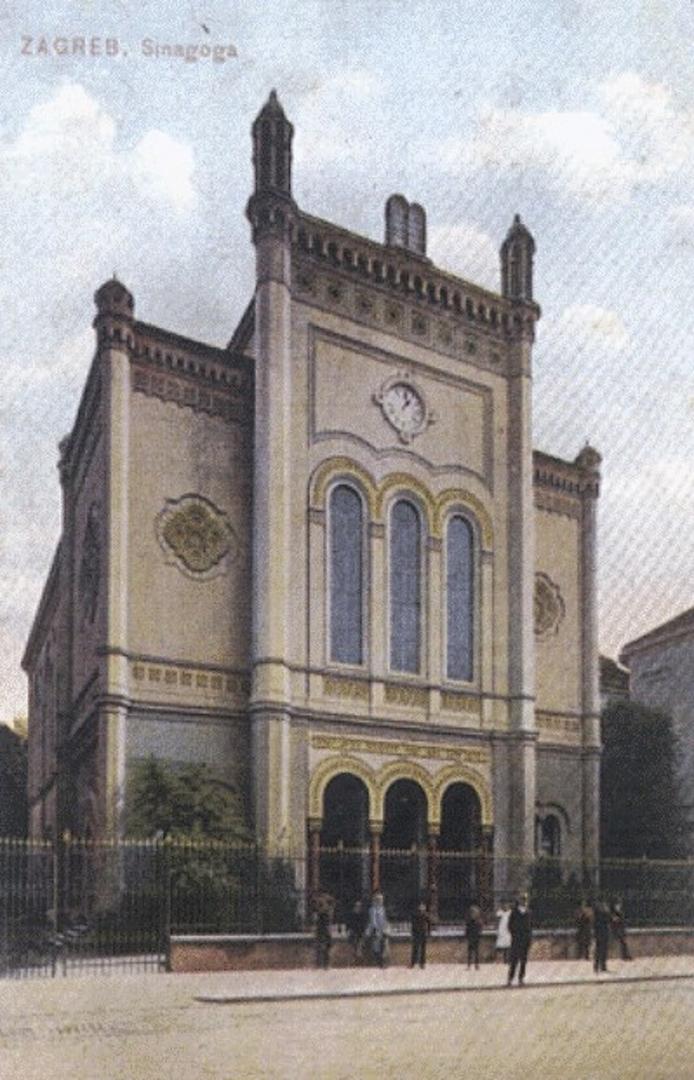Zagreb Synagogue
| Zagreb Synagogue Zagrebačka sinagoga |
|
|---|---|

Zagreb Synagogue on a 1906 postcard
|
|
| Basic information | |
| Location | Zagreb, Croatia |
| Geographic coordinates | 45°48′42.5″N 15°58′41″E / 45.811806°N 15.97806°ECoordinates: 45°48′42.5″N 15°58′41″E / 45.811806°N 15.97806°E |
| Affiliation | Judaism |
| Country | Croatia |
| Year consecrated | 1867 |
| Status | Destroyed (1941–1942) |
| Leadership | Miroslav Šalom Freiberger |
| Architectural description | |
| Architect(s) | Franjo Klein |
| Architectural type | Synagogue |
| Architectural style | Moorish Revival |
| General contractor | Jewish Community of Zagreb |
| Groundbreaking | 1866 |
| Completed | 1867 |
| Specifications | |
| Direction of façade | West |
| Capacity | 488 (original design) 708 (1921 adaptation) |
| Length | 30 m (98 ft) |
| Width | 19.7 m (65 ft) |
| Height (max) | 24 m (79 ft) |
The Zagreb Synagogue (Croatian: Zagrebačka sinagoga) was the main place of worship for the Jewish community of Zagreb in modern-day Croatia. It was constructed in 1867 in the Kingdom of Croatia-Slavonia within the Austrian Empire, and was used until it was demolished by the fascist authorities in 1941 in the Axis-aligned Independent State of Croatia.
The Moorish Revival synagogue, designed after the Leopoldstädter Tempel in Vienna, was located on modern-day Praška Street. It has been the only purpose-built Jewish house of worship in the history of the city. It was one of the city's most prominent public buildings, as well as one of the most esteemed examples of synagogue architecture in the region.
Since the 1980s, plans have been made to rebuild the synagogue in its original location. Due to various political circumstances, very limited progress has been made. Major disagreements exist between the government and Jewish organizations as to how much the latter should be involved in decisions about the reconstruction project, including proposed design and character of the new building.
Encouraged by the 1782 Edict of Tolerance of Emperor Joseph II, Jews first permanently settled in Zagreb in the late eighteenth century, and founded the Jewish community in 1806. In 1809 the Jewish community had a rabbi, and by 1811 it had its own cemetery. As early as 1833, the community was permitted to buy land for construction of a synagogue, but did not have sufficient money to finance one at the time.
...
Wikipedia
